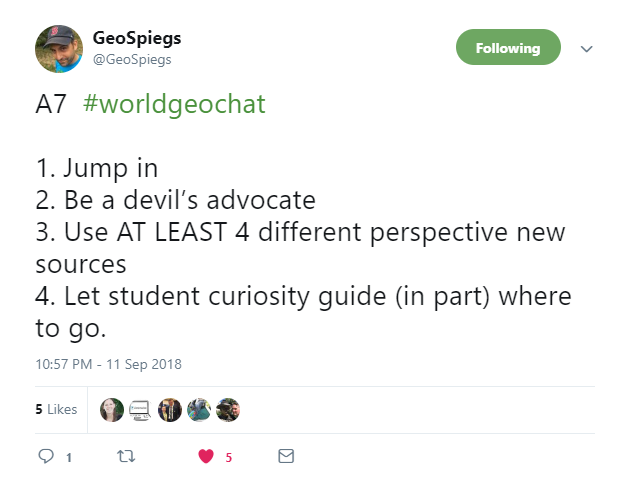Last Updated on November 11, 2024
Addressing news in the classroom can be a source of unease for some. The abundance of inflammatory language in the public sphere, attacks on journalists, and frequent confusion between fact and opinion can present challenges when trying to teach current events. All of the information and disinformation circling around the media can make having productive conversations hard. And yet, teachers across the country want their students to be informed about what is happening in the world outside of school.

It’s important to connect students to what is happening in the world around them in order to broaden their perspectives and deepen their appreciation for the relevance of what they are learning in the classroom. Teachers have an important role in helping students know where to go to be informed about global events, the economy, the environment, and politics so they can make the best decisions for themselves and their communities. In an effort to support news discussions in a constructive, unbiased, informative way, we’ve tried to pull together some more helpful tools and resources below.
These resources can help teachers to set the scene for talking about news and current events–to create a safe space, where people might feel comfortable having differing opinions, and where everyone feels welcome to speak up and share their views.
- Facing History and Ourselves has great resources to help you create a positive classroom culture and create safe spaces for differing opinions in the classroom. Check out this lesson on Preparing Students for Difficult Conversations” and this one on “Fostering Civil Discourse: How Do We Talk about Issues that Matter?.”
- Teaching Tolerance also has a helpful guide to cultivate “Civil Discourse in the Classroom.”
- The New York Times also offers guidance for encouraging civil classroom discussions. How do you handle conversations in your classroom in general? What structures and rules are in place to ensure that they are constructive and civil, yet promote real learning and growth? How do you invite all voices? What happens when someone states an unpopular opinion? Read more here and find relevant lesson plans.
- This Edutopia article provides tips for “Teaching Students to Argue Respectfully.”
- ProCon offers a handy resource on the role of critical thinking in promoting civil discourse as well as a list of books, articles, and studies about using controversial issues to stimulate critical thinking.
- Allsides showcases examples of the same topic covered by both left- and right-leaning sources. Having students compare news coverage across different different media sources can help them develop important media literacy skills.
In addition to exploring the resources above to see what might resonate with your teaching needs, check out our Listenwise current events for daily news stories curated for the classroom to engage your students in learning about what’s happening in the world outside of school. Our debate stories posted on Fridays offer good opportunities for students to exercise civil discourse in discussing multiple perspectives on contemporary issues.
Educator, Paul Hernandez, shares how he uses Listenwise current events to engage his students with content that connects to the real world on topics they care about.
This #WorldGeoChat Twitter conversation on using current events in classrooms includes tips and takeaways from teachers on how they try to connect current events to their students’ lives and personalize teaching in order to drive student engagement.

There were some good words of advice from teachers on how to tackle difficult conversations in their classrooms.

Others offered advice on where to start if you haven’t talked about current events before.

Get creative! Please feel free to comment and expand our resource base with things you use in your classroom to facilitate discussions about current events.
